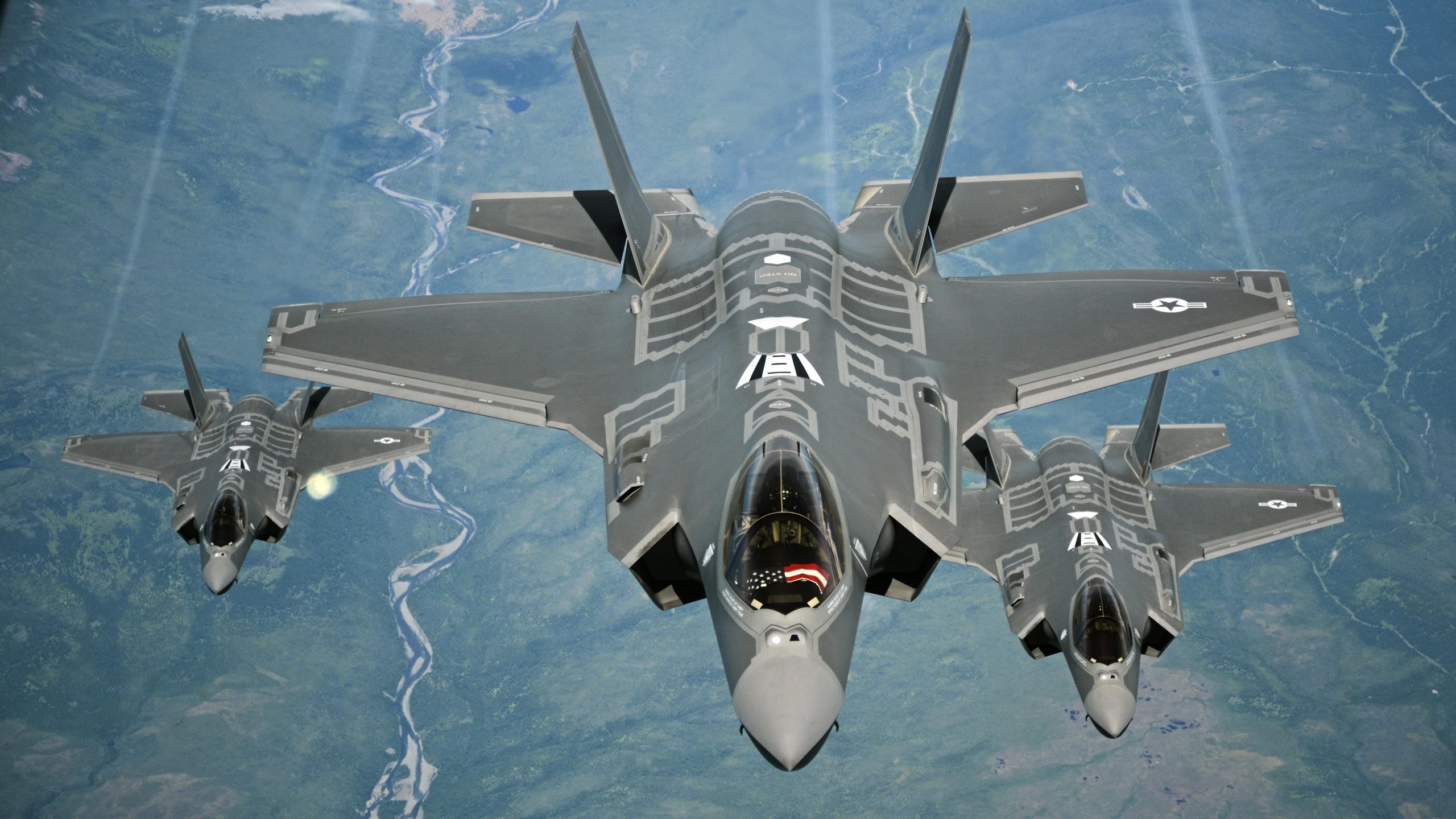✈️ F-35 Lightning II — Review
🧩 Overview
The F-35 Lightning II is a fifth-generation multirole stealth fighter designed by Lockheed Martin under the Joint Strike Fighter (JSF) program. It’s built to do everything from air superiority and ground attack to intelligence, surveillance, and reconnaissance (ISR) — all with stealth and advanced sensors.
There are three main variants:
-
F-35A: Conventional takeoff and landing (CTOL) — used by the U.S. Air Force and many allies.
-
F-35B: Short takeoff and vertical landing (STOVL) — used by the U.S. Marine Corps, UK Royal Navy, and others.
-
F-35C: Carrier-based — used by the U.S. Navy.
⚙️ Key Specs (F-35A)
-
Crew: 1
-
Length: 51.4 ft (15.7 m)
-
Wingspan: 35 ft (10.7 m)
-
Max speed: Mach 1.6 (1,200+ mph / ~1,930 km/h)
-
Combat radius: ~770 nautical miles (~1,400 km)
-
Service ceiling: 50,000 ft (15,000 m)
-
Engine: 1 × Pratt & Whitney F135 turbofan
-
Stealth: Internal weapons bays, radar-absorbing materials, low-RCS shaping
-
Weapons:
-
Internal: 2,000 lb JDAMs, AMRAAM, AIM-9X
-
External (optional): bombs, missiles, pods
-
Gun (A only): 25mm GAU-22/A
-
-
Avionics: AESA radar, DAS (Distributed Aperture System), EOTS, advanced sensor fusion
🛠 Design Highlights
-
Advanced stealth: Designed to be nearly invisible to radar in the frontal aspect
-
Sensor fusion: Combines data from onboard and external sensors for unmatched situational awareness
-
Networked warfare: Shares targeting and threat data across aircraft and allies in real time
-
Multirole performance: Air-to-air, air-to-ground, electronic warfare, ISR — all in one platform
-
Single-pilot ease of use: Helmet-mounted display shows critical data right on the visor
-
Interoperability: Built for NATO and allied use with common logistics and systems
✅ Strengths
-
✅ Stealth dominance: Among the most radar-evading aircraft in the world
-
✅ Incredible situational awareness: Pilots call it “unfair” due to the sensor advantage
-
✅ Global logistics and support network
-
✅ Multirole capability: Replace multiple legacy aircraft (e.g., F-16, Harrier, F/A-18)
-
✅ Modern digital cockpit with minimal switches and clutter
-
✅ Growing global fleet with interoperability between allies
⚠️ Weaknesses / Criticisms
-
❌ High cost: ~$80–100 million per unit (though prices have fallen over time)
-
❌ Maintenance-intensive: Complex stealth coatings and systems require attention
-
❌ Limited internal weapons payload compared to larger fighters or bombers
-
❌ Initial software and production issues (though many have since been resolved)
-
❌ Criticized in early years for reliability and agility compared to F-22 or Eurofighter — but steadily improved
🏁 Final Verdict
| Category | Rating (★ out of 5) |
|---|---|
| Stealth | ★★★★★ |
| Multirole Flexibility | ★★★★★ |
| Sensors & Avionics | ★★★★★ |
| Maneuverability | ★★★★☆ |
| Cost-effectiveness | ★★★☆☆ |
| Global Impact | ★★★★★ |
| Cool Factor | ★★★★★ |
🔚 Final Thoughts
The F-35 Lightning II is not just a fighter — it’s a flying supercomputer built for 21st-century warfare. It’s already operational with over a dozen allied nations and continues to evolve with software upgrades and mission adaptability.
While it started off controversial for its delays and cost, it’s now proven to be a battle-ready, stealthy, data-dominant fighter that defines modern combat aviation.

Comments are closed